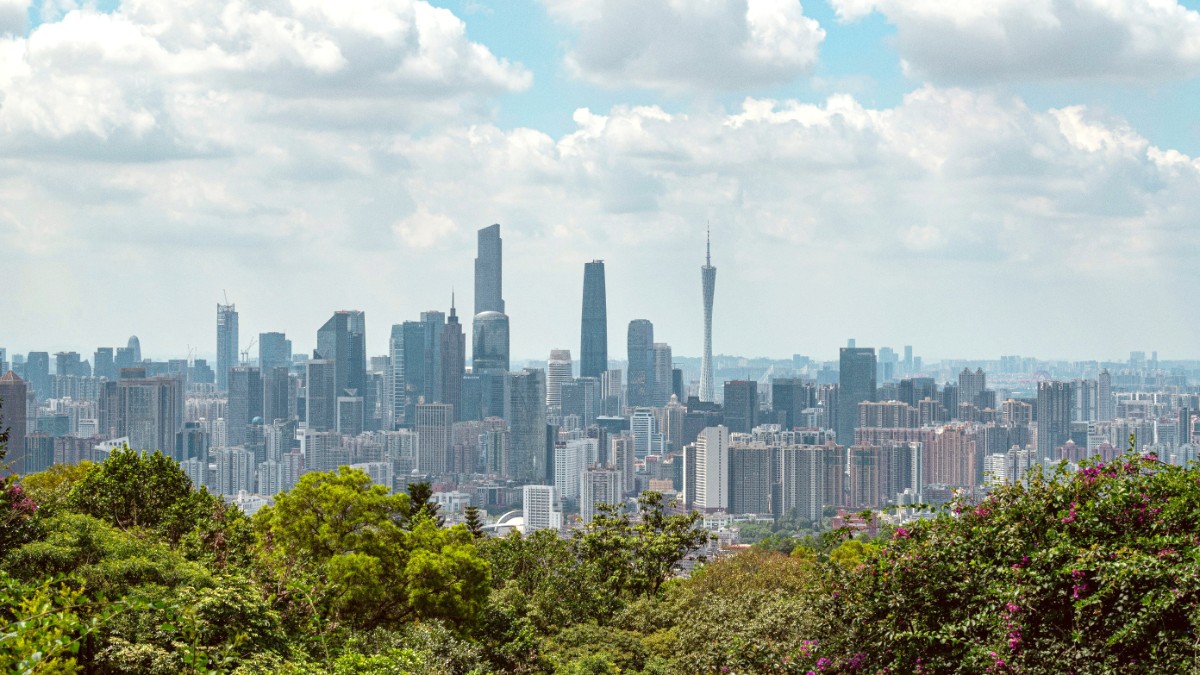
Guangdong, China
Guangzhou holds numerous landmark attractions. Its unique twisting design dominates the city skyline, especially when illuminated at night.
The city's architectural marvels and historical sites present unparalleled panoramic city views and glimpses into its rich past.
This site is a significant historical and architectural landmark.
The largest park in downtown Guangzhou, encompassing several hills and lakes.
Home to the iconic Five Rams Sculpture, a symbol of Guangzhou.
Houses the Guangzhou Museum, narrating the city's 2,000-year history.
Ancient city walls also run through the park, offering historical depth.
An excellent spot for morning walks, picnics, or observing local life.
Guangzhou's museums and cultural institutions present insights into its history, art, and modern development.
A large, modern museum in Zhujiang New Town. It features permanent exhibitions on Guangdong's history and culture, natural resources, and art collections. Admission free, online reservation needed.
Located within the Zhenhai Tower in Yuexiu Park. This museum showcases Guangzhou's 2,000-year history through artifacts and exhibits.
A stunning architectural masterpiece by Zaha Hadid. A premier venue for world-class opera, ballet, classical concerts, and theatrical performances.
Another architectural marvel in Zhujiang New Town, designed with an unique "stacking" concept. It holds impressive public spaces.
These institutions collectively chronicle the city's past and artistic scene.
Check official websites for performance schedules or temporary exhibitions well in advance.
Built over a 2,000-year-old tomb. It contains a vast collection of artifacts, including the king's jade burial suit.
One of the oldest Buddhist temples in Guangzhou, dating back to the 4th century. Holds great historical significance for Chinese Buddhism.
A collection of historically and culturally significant landmarks, evolving over centuries to define Guangzhou's beauty.
Explore Guangzhou's past by visiting these historically rich locations.
Guangzhou, despite its urban density, holds green spaces and natural beauty for relaxation and recreation.
A prominent mountain range within the city limits, offering lush greenery, scenic trails, and panoramic views. It serves as the "lungs of the city."
The largest park in downtown Guangzhou, with lakes, hills, and walking paths. A green escape that also hosts the Five Rams Sculpture.
A serene island in the Pearl River. It holds art galleries, sports facilities, and pleasant riverside walks and cycling paths. A peaceful contrast to the city's bustle.
A large urban lake park adjacent to Baiyun Mountain, popular for boating, jogging, and relaxation.
A large urban wetland park important for ecological conservation and birdwatching, offering peaceful walking trails.
These parks serve as excellent spots for a morning walk, a picnic, or observing local life.
Moxing Ridge on Baiyun Mountain offers the most expansive city views on a clear day.
Baiyun Mountain has cable car and eco-bus options for ascending, making it accessible for various fitness levels.
Guangzhou offers opportunities to explore its storied past.
Gain insights into Guangzhou's evolution through its museum collections.
For popular attractions like Canton Tower or museums with free admission, consider booking tickets or making reservations online in advance, especially during peak times.
This method saves time and guarantees entry.
Beyond the main tourist circuit, Guangzhou holds quieter, more local spots that present unique insights.
A beautifully revitalized historic street in Liwan District. It preserves traditional Xiguan architecture while integrating modern cafes, boutiques, and cultural workshops.
A picturesque area with canals, traditional bridges, old residential houses, and small eateries. It evokes a strong sense of old Guangzhou.
A former dockyard transformed into a trendy entertainment area. It features repurposed warehouses that now house bars, restaurants, cinemas, and creative spaces.
A spot for an evening out.
A historical trading port that was a significant hub during the Maritime Silk Road era. It features traditional architecture, a temple, and local food stalls.
Reach via bus or a combination of metro and bus from the city center.
A charming historical island that served as a British and French concession, presenting well-preserved colonial-era architecture.
Best explored on foot, visit early morning or late afternoon.
Consider purchasing a city tourist map upon arrival, or download reliable offline maps like Baidu Maps or Amap on your phone.
These resources aid navigation efficiently and help locate various attractions throughout your visit.
For organized tours to attractions, consider using platforms like GetYourGuide for convenience.